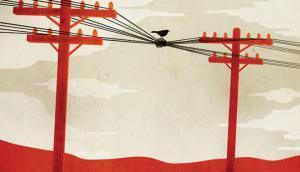Generation Gap: Texas’ failed experiment with deregulating electricity
 In my latest Texas Monthly column, I discuss the long-running problems with Texas’ efforts to deregulate the electricity market. The article hit the news stand just as the bankruptcy of Energy Future Holdings, the state’s biggest utility, appeared imminent. The story provides some context to EFH’s troubles, as well as the ongoing costs, inefficiencies and reliability shortcomings that continue to plague the market:
In my latest Texas Monthly column, I discuss the long-running problems with Texas’ efforts to deregulate the electricity market. The article hit the news stand just as the bankruptcy of Energy Future Holdings, the state’s biggest utility, appeared imminent. The story provides some context to EFH’s troubles, as well as the ongoing costs, inefficiencies and reliability shortcomings that continue to plague the market:
Just after seven a.m. on January 6, as Texans awakened to one of the coldest mornings in years, an email and social media alert went out from the Electric Reliability Council of Texas: “Reduce electric use now. Risk of power outages exist throughout Texas. Power warning in effect.” The last time a hard freeze gripped Texas so tightly, in February 2011, power blackouts rolled across much of the state as ERCOT, which operates the state’s power grid, struggled to meet the demand. Then, just as in January, power plants unexpectedly went offline when the state needed them most. This time blackouts were averted, but barely.
This isn’t the free-market wonderland that lawmakers envisioned back in 1999 when they voted to deregulate electricity, turning most of the state’s power system over to private companies. That decision, which was helped along by some arm-twisting from Houston’s Enron Corporation, was supposed to result in a robust market, thriving with competition, which would drive down prices for consumers, unleash a host of twenty-first-century innovations, and boost reliability by encouraging newer—and greener—generating plants. Texas, it was claimed, would become the envy of the nation for its cheap and abundant power, and the companies involved would make fat profits in the process. “Competition in the electric industry will benefit Texans by reducing monthly rates and offering consumers more choices about the power they use,” said a euphoric Governor George W. Bush.
Yet a dozen years after the launch of deregulation, which affects about 85 percent of the state, the system remains arcane and confusing to many consumers.





